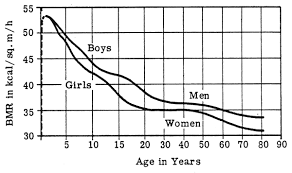What is the BMR Calculator?

Table of Content for the BMR Calculator
Your BMR (Basal Metabolic Rate) is an estimate of how many calories you’d burn if you were to do nothing but rest for 24 hours. It represents the minimum amount of energy expenditure in calories needed to keep your body’s basic functioning, including breathing and keeping your heart beating. Below we will explore the BMR Calculator in more detail.
How to measure your BMR
Not to be confused for RMR, your basal metabolic rate or BMR is measured in calories per unit of time, and BMR is most often shown to you in calories burnt per day. When you measure your BMR, what you are measuring the amount of energy that your body consumes while at rest in a neutrally temperate environment, and in a post-absorptive state (meaning that the digestive system is inactive, which requires 12 hours of fasting). In a normal day, the closest you get to reaching your basal metabolic rate is when you are sleeping. Basal Metabolic rate is also known as your body’s metabolism or basal metabolism. Increasing your metabolic weight, such as exercise will increase your BMR. Next, we will talk about how to calculate your BMR.
Formula for the BMR Calculator
The BMR formula takes into account the variables of height, gender, age and weight to calculate your metabolism/BMR. You can then apply your activity factor to your BMR by using the harris benedict equation so you can calculate how many calories you burn in one day.
What is my BMR?
To find your BMR fill in your numbers in the below fields. The calculator below will calculate your BMR for you. To embed the bmr calculator below in your own website or blog, customize the bmr widget. Otherwise simple input your numbers in the bmr calculator below:
BMR Calculator for Men
The BMR equation for men is more dependent on height and weight, so you can have larger fluctuations of calorie needs. Basal Metabolic Rate for Men = 66 + (6.23 x your weight in pounds x 1.15) + (12.7 x height in inches) – (6.8 x age)
BMR Calculator for Women
The BMR for women is less dependent on height and weight, which is why BMR is never less than about 1100 calories a day. Basal Metabolic Rate for Women = 655 + (4.35 x your weight in pounds x 1.20) + (4.7 x height in inches) – (4.7 x age)
BMR Chart
You may have noticed that as you get older your body metabolism slows. This is normal since your body’s metabolic rate decreases with age, an indication of the decline in energy utilization and production. Here is the BMR chart that graphically represents how your metabolism decreases with your age.

BMR Changes With Age
Understanding Calorie Deficit for Weight Loss
Creating a calorie deficit is a crucial step if you’re aiming to lose weight. But what does it really mean, and how can you achieve it? Let’s dive into the effective strategies you can employ.
What is a Calorie Deficit?
A calorie deficit occurs when you consume fewer calories than your body burns in a day. This imbalance forces your body to use stored fat for energy, which, in turn, leads to weight loss.
How to Create a Calorie Deficit
-
Estimate Your Caloric Needs: First, you need to know how many calories your body requires to maintain your current weight. This is often referred to as your Basal Metabolic Rate (BMR). There are several online calculators that can provide this number based on factors like age, sex, weight, and activity level.
Plan Your Diet Carefully: Once you have your BMR, you can create a meal plan that subtracts 300 to 600 calories from this number. It’s important to ensure that you’re still getting the necessary nutrients, so consider consulting a nutritionist or using a meal planning app.
Increase Physical Activity: Adding exercise to your routine is another effective way to create a calorie deficit. Extra physical activity burns calories, which adds to the deficit created by your diet. Aim for at least 30 minutes of moderate-intensity exercise, such as brisk walking or cycling, most days of the week.
Track Your Progress: Using a fitness tracker or maintaining a journal can help you keep tabs on the calories you consume and expend. Adjust your calorie intake and exercise routine as needed to continue making progress.
Creating a calorie okay deficit is a proven method for weight loss. By managing what you eat and increasing your activity level, you can effectively encourage your body to use stored fat as energy, leading to weight loss. Remember, consistency is key in seeing results, so stay committed to your plan.
Basal Metabolic Rate Summary
Your BMR is the calories you burn when you are at rest/while sleeping. You can calculate your BMR by using the basal metabolic rate calculator. In the day of the average person, the BMR is responsible for approximately 60% to 70% of the total number of calories you burn. Please note that for athletes the bmr calculator would account for a smaller calorie expenditure than for sedentary individuals.